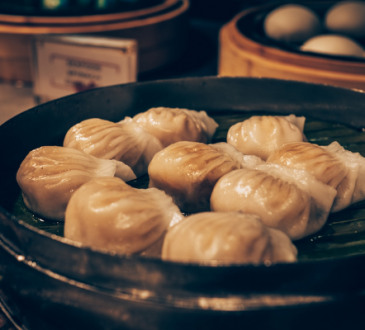Chinese Food with Rice: A Culinary Odyssey through Tradition and Innovation
Chinese cuisine, renowned for its rich flavors and diverse culinary traditions, has captured the hearts and taste buds of people worldwide. At the heart of this gastronomic journey lies a humble yet indispensable ingredient: rice. As we delve into the world of Chinese food with rice, we embark on a culinary odyssey that explores the cultural significance, regional variations, and modern adaptations of this timeless pairing.
Contents
The Cultural Significance of Rice in Chinese Cuisine
Rice holds a venerable position in Chinese culture, with its cultivation dating back thousands of years. Its symbolic importance goes beyond sustenance; it embodies prosperity, fertility, and unity. In traditional Chinese weddings, for example, throwing rice is a symbol of fertility and wishes for a bountiful life together.
Diverse Varieties of Chinese Rice Dishes
Chinese cuisine offers a myriad of rice-based dishes that showcase the versatility of this grain. Fried rice, a ubiquitous classic, transforms leftover rice into a flavorful medley of textures and aromas. Congee, a comforting porridge, takes on various regional nuances, with ingredients ranging from preserved century eggs to succulent meats.
Rice noodles, another beloved variation, grace the tables in many forms, from stir-fried chow fun to the delicate strands of vermicelli in soups. Each variety reflects the diverse culinary landscape of China, with regional differences contributing to a tapestry of flavors.
Regional Influences on Chinese Rice Cuisine
China’s vast expanse and diverse geography have given rise to a plethora of regional cuisines, each with its own distinctive rice dishes. In the south, where rice paddies stretch across the landscape, sticky rice takes center stage, featuring prominently in dim sum delights like zongzi, parcels of glutinous rice stuffed with savory fillings.
In the north, where wheat is more prevalent, rice dishes may play a supporting role, often accompanying hearty wheat-based meals. The juxtaposition of these regional influences adds depth and complexity to the world of Chinese food with rice.
The Art of Pairing: Chinese Main Courses with Rice
One cannot discuss Chinese food with rice without exploring the exquisite pairings of this staple with main courses. The simplicity of a bowl of perfectly steamed jasmine rice enhances the flavors of accompanying dishes, whether it be the savory notes of sweet and sour pork or the umami richness of braised beef.
Iconic dishes like General Tso’s Chicken, Kung Pao Shrimp, and Mapo Tofu find their perfect complement in a bed of fluffy rice. The harmony of textures and tastes achieved in these pairings is a testament to the culinary mastery embedded in Chinese traditions.
Fusion Flavors: Modern Takes on Chinese Food with Rice
As global culinary influences continue to intertwine, modern interpretations of Chinese food with rice have emerged. Creative chefs fuse traditional Chinese ingredients with international flavors, giving rise to innovative dishes that appeal to diverse palates.
In metropolitan hubs worldwide, one can find trendy eateries offering twists on classic Chinese rice dishes. Think kimchi fried rice, a delightful fusion of Chinese and Korean flavors, or sushi-inspired rice bowls that marry Japanese and Chinese culinary elements.
Cooking Techniques: Mastering Chinese Rice Cuisine at Home
For those eager to embark on their culinary journey, mastering the art of cooking rice is a fundamental skill. Traditional methods, such as the absorption and steaming techniques, ensure that each grain retains its distinct texture and fragrance.
A quick stir-fry can transform plain rice into a delectable dish, as exemplified by Yangzhou fried rice, a specialty that originated in the southeastern Chinese city of Yangzhou. Home cooks can experiment with different ingredients, from vegetables to meats, to create their signature rice masterpieces.
Health Benefits of Chinese Rice-based Meals
Beyond its culinary appeal, rice-based meals in Chinese cuisine offer notable health benefits. Rice is a gluten-free grain, making it an excellent option for those with gluten sensitivities. Additionally, it serves as a complex carbohydrate, providing sustained energy and promoting satiety.
Chinese rice dishes often incorporate an array of vegetables, lean proteins, and aromatic spices, contributing to a balanced and nutritious diet. The inclusion of ingredients like ginger, garlic, and green tea further adds antioxidant properties to these flavorful meals.
Popular Chinese Rice Restaurants Around the World
For those eager to experience the authenticity of Chinese food with rice, renowned restaurants around the world beckon. From the Michelin-starred establishments of Hong Kong to the bustling eateries in New York’s Chinatown, the global appeal of Chinese cuisine is evident.
Notable mentions include Din Tai Fung, celebrated for its delicate xiaolongbao and flavorful fried rice, and Haidilao, where the theatrical hot pot experience takes center stage alongside a variety of rice-based accompaniments.
Conclusion
In conclusion, the world of Chinese food with rice is a vast and flavorful landscape that blends tradition and innovation. From the cultural significance of rice in Chinese society to the diverse regional influences and modern fusions, this culinary journey is both rich and rewarding.
As we savor the complexities of iconic pairings and explore the health-conscious aspects of Chinese rice-based meals, we find ourselves immersed in a tapestry of flavors that transcend borders. Whether enjoyed in the heart of China or at a local restaurant in a global metropolis, Chinese food with rice continues to captivate and unite food enthusiasts worldwide, proving that the magic of this culinary tradition lies in each grain of rice.






